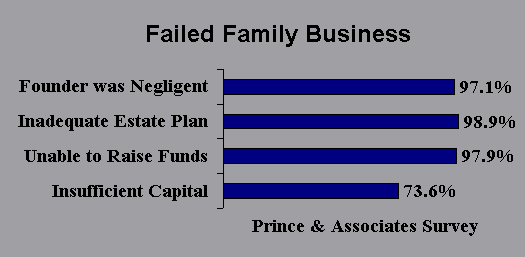Using an ESOP and a CRT to Preserve Family Wealth

Using an ESOP with a CRT to Preserve Family Wealth
One of the most difficult tasks an entrepreneurial business founder must face is getting out of a family run enterprise, especially when there are no heirs involved in management. To create liquidity, one of the most creative tools available is the “chesop”. Actually, this technique is an employee stock ownership plan (ESOP) with an IRC §664 Trust (CRUT) designed to minimize tax liabilities on the transaction. Whether the non-income producing employer’s stock or, more commonly, the reinvested proceeds under the §1042 roll-over provisions are transferred directly to the CRUT, the effect is the same.
- More income
- Lower taxes
- More assets to heirs
- Family Control of “social capital” for community resource
Ken Wiggins (63 widower) owns an automobile dealership and wants to create liquidity and slow down. He has been active as a volunteer at the local hospital since his wife of 38 years passed away, and prefers to continue community service during his retirement. His two daughters are already well provided for through his wife’s trust and he is faced with a business that requires more time and patience than he is willing to provide. His advisors suggested that his management staff and long term employees might be better able to continue operating the dealership profitably, and an ESOP would be an effective tool to transfer the business ownership. In order to qualify for tax deferral, Mr. Wiggins must put at least 30% of his corporate stock into the ESOP, but then he has up to 15 months to reinvest the proceeds into other qualified replacement property and postpone any recognition of his capital gain. While the original basis and tax liability remain, he would have a more diversified portfolio with which he could make cost-effective retirement planning decisions. Knowing full well, on exchanged stock, there will be some stocks that perform poorly, but when sold would trigger the deferred capital gains tax, he needs further alternatives to better manage his $4 million estate. By selecting those under performing assets to be sold, and contributing this stock to a §664 Charitable Remainder Uni-Trust, the repositioned asset is now capable of producing a stream of retirement income. One advantage of this technique is that instead of creating a taxable liability, there is an income tax deduction that may be used to offset the redemption of his other qualified §1042 stocks*. Besides producing more income, the remainder interest serves to create a family philanthropic fund that his daughters and grandchildren will oversee. For further information on this or other case studies, contact our office
|
ESOP CRT –http://members.aol.com/CRTrust/CRT.html |
Sell Business – Pay Tax |
ESOP – §664 Trust |
| Fair Market Value of Stock Contributed to ESOP |
$2,500,000 |
$3,000,000 |
| Less Adjusted Cost Basis |
$65,000 | |
| Gain on Sale |
$2,435,000 | |
| Capital Gains Tax at 30% (federal and state) |
$730,500 | |
| Capital Controlled – Available to be Reinvested @ 8% |
$1,769,500 |
$2,910,000 |
| Annual Return from 8% Income Fund |
$141,560 | |
| Avg. Annual Return 6% Payout §664 Trust with 8% Portfolio |
$186,129 | |
| Avg. After-tax Cash Flow From Repositioned Assets |
$81,255 |
$106,838 |
| Taxes Saved – Deduction of $1,031,425 @ 42.6% Tax Rate |
$439,387 | |
| Total After-tax Cash Flow and Tax Savings After 22 Years |
$1,787,620 |
$2,789,830 |
| After Estate Taxes, Asset Value Owned by Mr. Wiggins’ Heirs |
$887,750 |
$0 |
| Transferred to Wiggins’ Family Fund / Community Foundation |
$0 |
$3,864,949 |
* The IRS has released a private letter ruling permitting §1042 “ESOP replacement stock” to be transferred to a §664 CRT and avoid immediate capital gains recognition. See PLR 9715040 (January 15, 1997). The seller may reinvest ESOP proceeds in “qualified replacement property” sec. 1042(c)(4) and that includes most publicly traded stock.
Henry & Associates